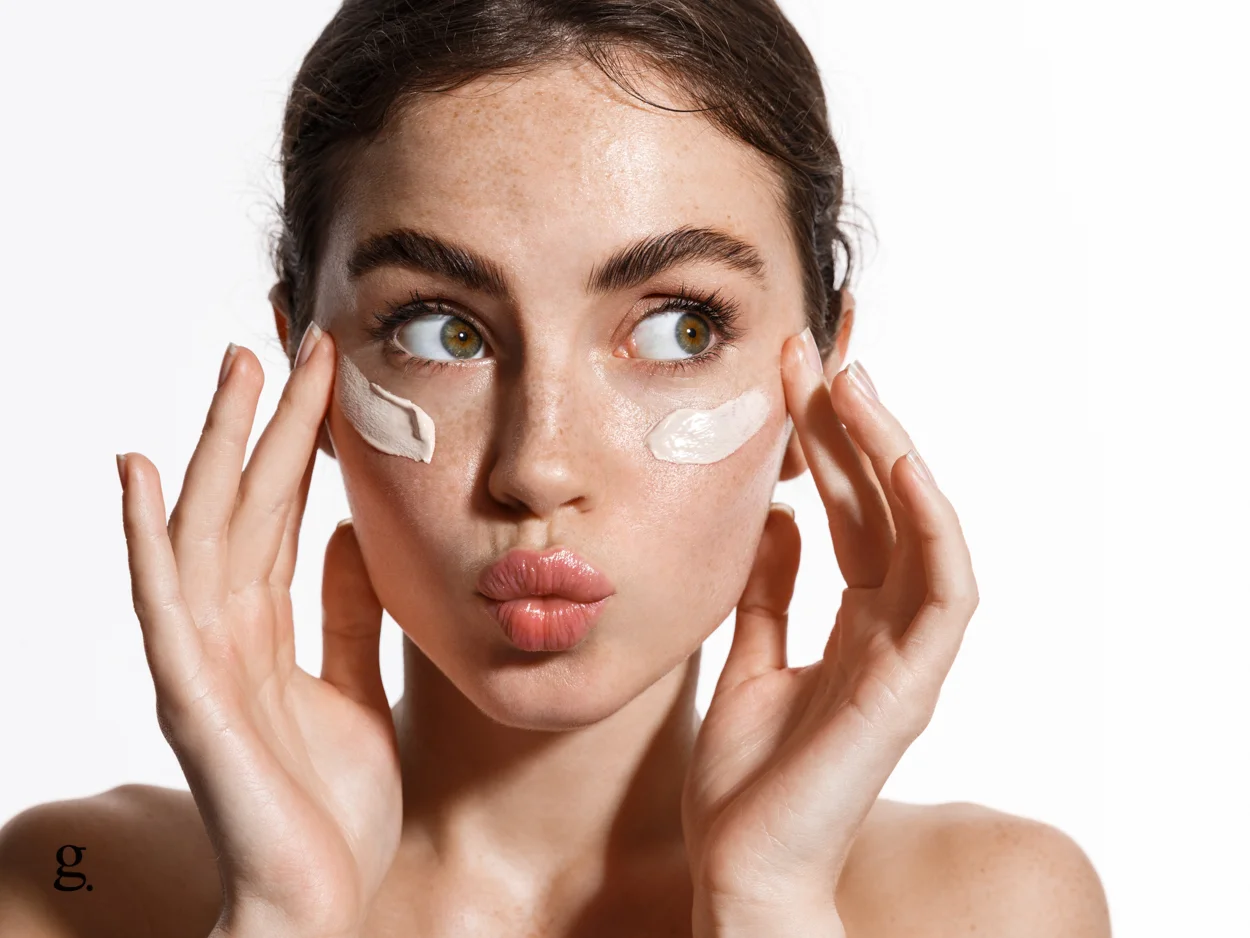Most of us would love to find a magic bullet that could help us turn back the clock, and when it comes to products that claim to prevent and/or reverse the visible signs of aging, not all products are created equal.
Generally speaking, anti-aging skincare products are designed to help reduce the appearance of wrinkles, fine lines, and other signs of aging. They can be an essential part of a comprehensive skincare routine aimed at maintaining a youthful appearance. However, it’s crucial to have realistic expectations about what these products can and cannot do.
What Anti-Aging Skincare Products Can Do
Here’s what is possible with modern anti-aging skincare products:
- Hydrate the skin: Moisturizers and creams can provide much-needed hydration, helping to plump the skin, reduce the appearance of fine lines, and maintain the skin’s natural moisture barrier.
- Improve skin texture: Some anti-aging products, such as exfoliants and retinol-based formulations, can promote cell turnover and improve the skin’s texture, making it smoother and more radiant.
- Stimulate collagen and elastin production: Ingredients like retinoids, peptides, and growth factors can help stimulate collagen and elastin production, which may help to reduce the appearance of wrinkles and improve skin firmness over time.
- Brighten and even skin tone: Antioxidants, such as vitamin C and niacinamide, can help to brighten the skin and reduce the appearance of age spots and hyperpigmentation, resulting in a more even skin tone.
- Protect from environmental damage: Antioxidant-rich products can help to neutralize free radicals, protecting the skin from environmental damage caused by pollution, UV radiation, and other stressors.
What Anti-Aging Skincare Products Can’t Do
Here are the limitations so you can set your expectations accordingly:
- Reverse the aging process: While anti-aging products can help to mitigate the signs of aging, they cannot completely reverse the natural aging process. Genetics and various lifestyle factors will continue to influence the way your skin ages.
- Eliminate deep wrinkles and sagging skin: Although some anti-aging products may improve the appearance of fine lines and wrinkles, they cannot eliminate deep wrinkles or significantly lift sagging skin. In such cases, more invasive treatments, like dermal fillers or cosmetic surgery, may be necessary.
- Provide instant results: Most anti-aging products require consistent use over an extended period before noticeable improvements are visible. It’s essential to be patient and maintain a consistent skincare routine to achieve the desired results.
- Replace a healthy lifestyle: While anti-aging skincare products can help to maintain a youthful appearance, they cannot replace the importance of a healthy lifestyle. Adequate sleep, a balanced diet, regular exercise, and stress management are crucial factors in maintaining healthy, youthful-looking skin.
The most common anti-aging ingredients
While anti-aging products all typically draw from the same pool of active ingredients, no two anti-aging formulas will be identical (or at least, that’s seriously unlikely).
The age-defying effects are determined by the active ingredients within the formula and their respective potency.
Some of the most commonly found ingredients include:
- Retinol: a vitamin A derivative that helps to improve the appearance of wrinkles and fine lines by increasing cell turnover when applied topically.
- Peptides: these are short chains of amino acids that have a low molecular weight, allowing them to easily penetrate the skin. Once absorbed, they can help to stimulate collagen production, resulting in firmer, plumper skin.
- Niacinamide: a form of vitamin B3 that works to brighten the skin and even out the appearance of discoloration.
- Hyaluronic acid: a moisturizing ingredient that helps keep the skin hydrated and plump.
- Vitamin C: This potent antioxidant helps protect the skin against damage from free radicals, while also working to brighten the complexion.
Often, anti-aging formulas will contain a combination of these active ingredients, alongside other ingredients not listed (often botanical extracts) that work synergistically to further amplify the anti-aging results.
Are the more expensive anti-aging products better than the cheaper ones?
With so many different products on the market, it can be difficult to know which ones are worth the investment, especially when price points can vary from cheap to remortgage-your-house expensive.
So, are the ones that cost more inherently better than the cheaper alternatives? There is no easy answer to this question.
Going with a cheaper formula, you run the risk of buying a product with micro-doses of active ingredients, whereas if you buy something expensive, you also risk buying into hype and marketing rather than buying something potent.
The reality is that cheaper products can be just as effective as the expensive ones, provided that you’re shopping with a reputable brand that’s pricing its products realistically.
Ultimately, the best way to determine which products are right for you is to experiment with different types and brands until you find those that give you the best results. We also recommend that you read reviews and user feedback before buying.
How to use anti-aging products to get the best results
So, as we’ve already established, anti-aging products can help to reduce the appearance of wrinkles, fine lines, and other signs of aging, however, getting these beneficial effects requires using them correctly and consistently.
Once you start using an anti-aging product, be sure to use it daily, as its beneficial effects will gradually start to show with consistent usage.
Where to use anti-aging products in your skincare routine
Firstly, anti-aging treatments should come after you have cleansed and toned your skin, but before you moisturize and apply any SPF.
Below is a quick breakdown of where you should use an anti-aging treatment in your routine to ensure you get the full benefit:
- Step 1: Cleanse
- Step 2: Exfoliate
- Step 3: Toner
- Step 4: Use the anti-aging product(s)
- Step 5: Moisturize
- Step 6: Apply sunscreen
Anti Aging Serums vs Anti Aging Creams
When it comes to anti-aging products, there are two main types: serums and creams. Both of these products offer unique benefits and can be effective at reducing the signs of aging. However, to determine which one is right for you, it’s essential to understand their differences and how they work on your skin:
Texture and Consistency
Serums are typically lightweight, water-based, and have a thinner consistency. This makes them easily absorbed by the skin, allowing the active ingredients to penetrate deeper and work more effectively. They often have a silky or gel-like texture, which makes them ideal for layering under other skincare products, such as moisturizers and sunscreens.
Creams, on the other hand, are thicker in consistency and usually have a richer, more emollient texture. They are designed to create a protective barrier on the skin’s surface, which helps lock in moisture and keep the skin hydrated. This makes creams particularly suitable for those with dry or sensitive skin, as they can provide extra nourishment and comfort.
Active Ingredients and Concentration
Serums generally contain a higher concentration of active ingredients compared to creams. This allows them to deliver more potent anti-aging benefits, targeting specific concerns such as fine lines, wrinkles, dark spots, and loss of elasticity. Common active ingredients found in serums include retinol, hyaluronic acid, peptides, antioxidants, and various botanical extracts.
Creams, while still containing active ingredients, often have lower concentrations, as they are primarily formulated for hydration and moisturizing purposes. They may include ingredients like ceramides, niacinamide, shea butter, and other emollients that help improve the skin’s barrier function and overall health.
Usage and Application
Serums are typically applied after cleansing and toning but before moisturizing. Due to their lightweight texture, they can be easily layered with other products without causing heaviness or greasiness. They are often recommended for use during both day and night routines, depending on the specific product and its ingredients.
Creams are usually applied as the last step in a skincare routine, after serums and other treatments. They create a protective barrier on the skin, sealing in the benefits of previous steps while providing additional hydration. Some creams are formulated specifically for daytime use, containing SPF and other protective ingredients, while others are designed for overnight use, promoting skin regeneration and repair during sleep.
Ultimately, the choice between serums and creams will depend on your individual preferences, skin type, and specific concerns. You may find that a combination of both products works best for you, with a serum addressing targeted concerns and a cream providing hydration and protection.
Conclusion
Anti-aging skincare products are some of the most beloved and well-regarded in the industry, however, they’re unable to perform miracles – but you probably already knew that.
While they can help to make you look younger, they won’t be able to completely stop the aging process. So, if you’re looking for a product that will help you achieve flawless, youthful skin, we’re sorry to say that you’re out of luck – at least for now.
The ingredients within these products typically work to stimulate collagen and elastin production, helping improve the skin’s firmness and elasticity. Moreover, they can help protect the skin against oxidative stress and also brighten your complexion too.
As with most skincare products, consistency and correct usage are key, so make sure you use your anti-aging product(s) daily and as directed to get the best results.

